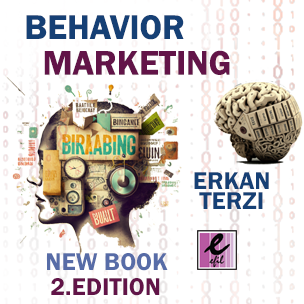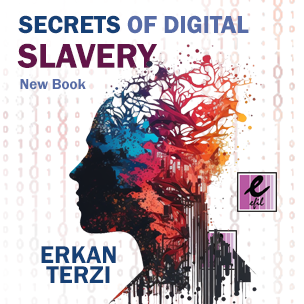It is necessary to examine how social media can trigger individuals’ emotional and psychological reactions, and how these reactions can resonate on a societal level. Social media platforms are filled with content that directly appeals to the subconscious, and this content can easily shape public perception. Behavioral marketing strategies should aim to harness this power in a responsible and ethical manner. The world is going through a difficult time. These days, one of the most frequently encountered terms in newspaper headlines and online platforms is “social media terrorism.” Pairing the words social media and terrorism was not easy in the past—at least until yesterday, we could confidently say that using these two words together was out of the question. But today, things are quite different. Now, the words social media and terrorism are mentioned side by side.
The greatest danger arises when posts that involve terrorist attacks or are intended to create chaos are shared via social media, and users spread dozens of pieces of information—whether true or false—without questioning them. In some cases, this information can even be used by the wrong individuals, institutions, companies, or even governments for their own interests. This is one of the most visible and serious threats. However, how should we assess users who simply want to share content freely or access accurate information from different sources? The real debate here centers around who is producing the news. The nature of social media and the digital world is vastly different from that of television, newspapers, and radio. In this realm, it is not journalists, TV anchors, or radio hosts who produce the news—it is the viewers (the users) themselves.
Freedom and sharing are inherent to the nature of social media. On platforms like Facebook, X (Twitter), Instagram, and YouTube—each with similar structures but different functions—sharing is part of human nature. Curiosity and a hunger for instant information are the biggest triggers. Psychologically, especially after a terrorist attack, earthquake, or disaster, receiving news or quickly sharing it with loved ones becomes an essential need for people. Beyond that, the ability to freely express personal opinions should be considered a fundamental individual right. The snowball effect embedded in social media’s DNA is sociologically significant. A striking post can instantly reach hundreds of thousands of people. In just one day, a single message can reach millions. In the history of the world, no communication tool other than television has had such power. However, the key social difference here is that the creators of the news are not private institutions, but the users themselves—in other words, us.
Any form of blocking, censorship, or attempt to slow down the internet can lead not to a collective shield of protection, but to the creation of a society fueled by hatred. At the same time, the power of social media to incite social chaos must not be overlooked. Regardless of who controls it, social media is an immensely powerful—and potentially dangerous—tool that can be used for both good and evil. It is no longer just in the hands of individuals; it can now be wielded by mass movements. It serves as both a communication tool and a weapon of mass destruction. In this context, the measures taken or to be taken by governments and international organizations are, of course, open to scrutiny—but they cannot be outright labeled as wrong. Through social media, both sincere and truthful posts and malicious, chaos-provoking content can be shared. The biggest misconception among users is the belief that such posts are being shared by their friends or loved ones. However, the reality is that most of these posts are not shared directly by your friends, but indirectly forwarded. The actual source is somewhere else. But your perception doesn’t work that way—and this is where the real danger begins.
In the 1920s, following World War I, the world was undergoing a major economic transformation. Scientific studies on social psychology began to influence the business world and politics. The work of Edward Bernays, one of the pioneers in this field, demonstrated how easily the masses could be manipulated. This was a system of subconscious manipulation. One of Bernays’ most well-known campaigns aimed to increase the desire for smoking among women. A cigarette brand seeking to boost sales approached him for support. At the time, analyses showed that smoking was predominantly a male habit, while women barely smoked. Culturally, it was frowned upon for women to smoke. The goal was to break this taboo. Cigarettes symbolized male power; and women not smoking was portrayed as a sign of weakness. The Easter Parade in New York provided the perfect setting for the campaign. Bernays asked a group of elite women to place cigarettes in their jackets and, at a specific moment, to light them in public. He informed the press that this act would represent “torches of freedom.” The operation was a success. The media was highly interested. The women were young, stylish, and from high society. They stood for equality and freedom. Newspapers covered the event. It was now difficult to oppose the narrative. For women, smoking became an ideology. Advertisements began to feature women, promoting the image of the “strong woman.” The torches of freedom had been lit. And the result? A significant increase in cigarette sales. More importantly, the negative societal perception of women smoking completely shifted to a positive one. Now imagine how such perception campaigns could be used in the digital world. Quite frightening, isn’t it? This example from nearly 100 years ago shows just how dangerous a communication tool can become when combined with the digital world’s power to reach millions in a very short time.
Just like in many other areas, the biggest shortcoming of our societies here stems from our lack of adequate education on the subject. We need to teach people how to use social media and explain how regulation and oversight should be implemented. This issue concerns not only internet experts, but also academics in the fields of communication, psychology, and sociology. As time goes on, we see technology becoming even more integrated into our lives. We use the social media apps on our phones obsessively. Now, governments, corporations, law enforcement, and even terrorists have access to a massive mass communication tool—but we still do not fully grasp how powerful this tool really is.
In just one minute, you can turn someone into a person hated by hundreds of thousands—or into a pop star. Whether the information being shared is true or not doesn’t really matter to anyone. Because the digital world operates in the moment. Users have neither the time nor the desire to verify every piece of content. A post appears, you look at it, comment on it, and then move on to the next. It’s a tool that may seem small on an individual level but has massive consequences on a collective scale. Research shows that accurate information spreads more slowly than false information. Between 2016 and 2017, 400,000 tweets were analyzed, and it was found that people spread false news at a much higher rate. This is a frightening reality. While psychological reactions may differ from culture to culture, we are all human—and our emotional responses are fundamentally the same.
Considering that I’m 45 years old, people like me were not born into a world dominated by such intense digital technologies. But look at the new generations. In just a few years, they will be the ones leading the world—how different do you think their reactions will be from ours? More intense, more digital, more ruthless. It’s time we asked this question: How can we regulate social media without destroying personal freedoms? Social media should no longer be viewed as “meaningless platforms where a few kids kill time.” We need restructuring efforts that allow us to take serious and realistic steps. Isn’t it time we faced our fears and started producing solutions?
In fact, the European Union has already begun taking concrete steps on this issue. Social media companies, in particular, bear significant responsibility. For example, following the tragic attack in Las Vegas in 2017, Facebook activated its “Crisis Response” feature, allowing users to confirm their safety and share accurate information. Such initiatives show that the positive use of social media is not only an ethical obligation but also a strategic advantage. However, social media companies must expand these positive approaches not merely based on legal requirements, but through a deeper ethical understanding.
Social media is filled with content that can quickly trigger users’ emotional responses and behaviors. A tweet or post that contains the right psychological elements can go viral and influence large audiences. Especially during crises such as terrorist incidents, social media can be exploited by malicious actors to spread panic and fear. Platforms like Facebook and Twitter (X) have faced intense criticism for the rapid spread of misinformation during such events, highlighting the need to improve content filtering and verification systems. Companies and marketing managers must use behavioral marketing strategies to harness this power responsibly—providing accurate information and positive guidance instead of manipulating emotions. This not only protects brand image but also reflects social responsibility. Leading American brands like Apple and Nike have increased both brand value and social awareness by addressing social issues with a mindful tone in their campaigns. In practice, brands should consider user tendencies and psychological triggers in their social media strategies. During crises, content that calms, guides, and informs contributes to building long-term trust—showing that social media campaigns can serve as powerful societal tools, not just commercial ones.
To avoid saying “if only” years from now, we must start making the right plans today and reinforce them through the education system to raise awareness among younger generations. Strong societies are built on strong minds. Hopefully, our country—and the world—can manage this process successfully with an approach that not only prioritizes security but also considers social development.


